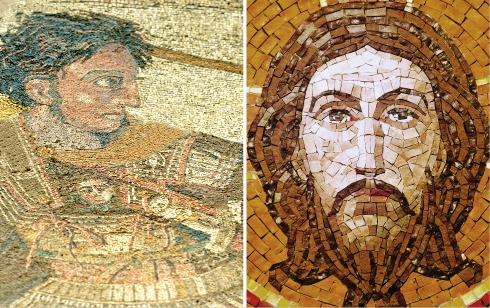 If you search the internet for leadership and Alexander the Great (356–323BCE) more than 34 million references will be uncovered in just a second. Some people have used his life story to develop ideas on qualities of good leaders and how to be successful in business following key principles from his leadership style. He was king of Macedonia and took his army to conquer what we now call Albania, Bulgaria, Greece, Turkey, Syria, Israel, Egypt, Iran, Iraq, Afghanistan and Northern India.
If you search the internet for leadership and Alexander the Great (356–323BCE) more than 34 million references will be uncovered in just a second. Some people have used his life story to develop ideas on qualities of good leaders and how to be successful in business following key principles from his leadership style. He was king of Macedonia and took his army to conquer what we now call Albania, Bulgaria, Greece, Turkey, Syria, Israel, Egypt, Iran, Iraq, Afghanistan and Northern India.
He was only in his 30s when he died. So, maybe he did know a thing or two about leadership.
When we look for historical sources, we have a few inscriptions in stone monuments which bear his name and praise his deeds. Some inscriptions on temples in Egypt and Iraq date from only 50 years after his death. Many statues and monuments were erected hundreds of years after he died by Greek and Roman leaders who wanted to identify with his legacy. At least that is how they wanted the subjugated people to see them.
ALEXANDER BIOGRAPHY
There are many written sources. Some of these are general histories of the Hellenic people (Greek and Macedonian culture) and some are books dedicated to what we might today call a biography of Alexander. The first of these appear about four to 500 years after his death. The written copies that survive of these ‘biographies’ are about 900 years after that.
Academic historians of this period in ancient history are certain about the essential facts of Alexander's life and deeds, even if they do not agree about what kind of leader he was. It is difficult historically to verify his leadership style, but about the basic outlines of his life and times historians are confident.
If historical certainty about Alexander, based on a few sources written hundreds of years after his death and available in copies almost a millennium after his death, provides a gold standard, then what we know of Jesus’ historical existence would be a platinum standard.
WRITTEN SOURCES
The first written sources about Jesus, the letters of Paul, appear around 20 years after his death. In the following decades until 95CE, all 27 books of the New Testament were written. Many of these sources contain references to historical people, places, customs, geography, and legal practices that can be verified with other ancient sources.
We have fragments of ancient copies of the biblical texts and whole books dated from after 150 years from Jesus’ death. There are about 5000 fragments and whole texts to examine from the first few centuries alone.
Apart from the biblical evidence, we also have non-Christian sources that confirm some of the basic outline of Jesus’ life, the circumstances of his death and the fact that he had an immense impact on many people; Jews, Greeks and Romans. These sources are mostly within 50-100 years of his death. These include letters exchanged between Roman governors and magistrates, the writings of Roman philosophers and mentions in a book written for the Romans by a captured Jewish general. These references are not usually friendly toward Jesus and his followers, making them all the more important as they have no desire to promote his cause.
In the first centuries after Jesus’ death the written sources explode into the millions. In fact, the growing preference for books rather than scrolls in the ancient world owes its origins to the Christian desire to have their own copies of the Bible and other writings about Jesus. Books were so much easier to carry about than large scrolls.
In the ancient world books were used for everyday activities, while poetry, history, plays and sacred texts were written on scrolls.
GRAFFITI EVIDENCE
Before even one century had passed there were inscriptions that mention Jesus or reference his words and deeds on tombs and places of worship and even unofficial carvings on walls which the Romans called graffiti. By the time we reach the sixth century there are thousands of monuments and places of worship dedicated to Jesus and early figures associated with him.
There are no academic historians of this period in ancient history who would argue that Jesus did not exist. He is probably the figure from ancient history about whom we are most
certain. His historical existence may be the least interesting thing about him. Lots of people from ancient history died by being executed by a foreign power but none of them were resurrected and were seen, and touched and shared meals with those who knew them before death. Now, that is really interesting.
Rev. Assoc. Professor Anthony Gooley is a theologian and associate dean (courses) BBI – The Australian Institute of Theological Education.
Image: Setting a new standard. The historial evidence for the existence of Alexander of Greece (mosaic left) may have hit a gold standard but the evidence for Jesus (mosaic right) hits a whole new level.